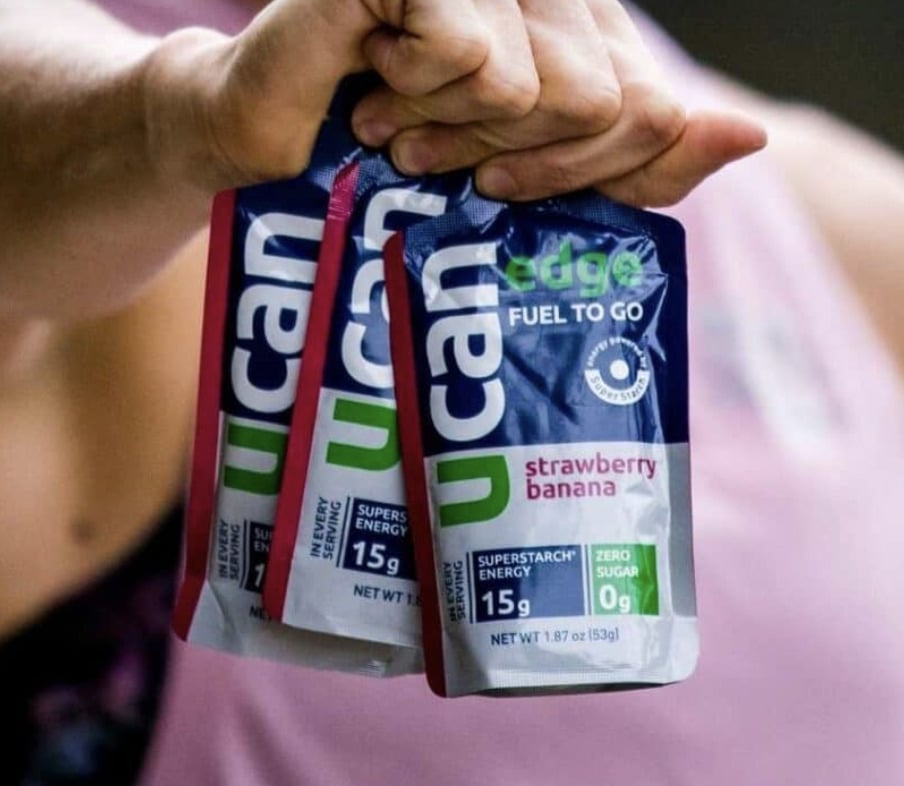How Do You Taper for a Marathon?
The marathon taper is vital for race day success. However, if you taper too much or too little for the marathon, you risk feeling flat on race day. This has happened to me! I am sharing my science-backed marathon taper tips for race day success!

The marathon taper is a CRITICAL component of any marathon training plan in order to absorb your training and get to the start line fresh. But tapering for a marathon can be tricky.
Table of contents
- How to Taper for the Marathon FAQs:
- How do you taper for a marathon?
- When should you start tapering for a marathon?
- Should you still do a long run during a marathon taper?
- Should you still do speedwork when tapering for a marathon?
- Should you lift weights during a marathon taper?
- Can you taper too much for a marathon?
- What happens to your body when you taper?
- 13 Marathon Taper Tips for Success
You can taper too much or too little and end up feeling flat on race day. I’ve experienced both. I’ve overtrained and not tapered enough–feeling flat on race day. I’ve also tapered too much which led to also feeling flat on race day. And don’t get me started on the mental challenge of the marathon taper! Pretty much every runner starts to panic–worried they are losing their fitness and their edge. I also always battle aches and pains, and sickness.
Being super aware of how your body feels during the marathon taper is normal. We call this marathon “taper tantrums” and they aren’t unlike the toddler temper tantrums we’re used to as mother runners: just like your child, your body is cranky because it is tired, and, well, hungry in a way (aka depleted). It needs rest and fuel (just like when your kids are melting down because they need a nap or a PB&J.)
The good news is, if you taper for the marathon correctly, you will feel fresh and springy on race day. These marathon taper tips will help!
How to Taper for the Marathon FAQs:
How do you taper for a marathon?
The recipe for a successful marathon taper includes two main ingredients:
- a cutback in total training volume ranging from 10 to 40 percent depending on how much total mileage you were doing or your level of fatigue.
- PLUS a little quality (aka speed) work to keep the legs bouncy.
The main 3 objectives of marathon tapering are to:
- Optimize the tension of your muscles so you feel a “spring” in your step when you run
- Minimize stress on your body and mind
- Increase muscle recovery and decrease muscle fatigue
Common mistakes people make during the marathon taper are running too much because they fear they are losing fitness OR running too little because they want to feel fresh.
Not following a marathon taper plan can upend your training. In fact, a Frontiers study found that recreational runners who adhere to strict tapers rather than relaxed tapers performed better by a median of 5 minutes! That’s huge! This is because the reduction of miles and intensity in the marathon taper is critical for muscle repair and glycogen replenishment (the fuel your body uses to run).
When should you start tapering for a marathon?
The marathon taper typically starts 2 to 3 weeks out from your marathon race day after your last longest run. How long you taper for the marathon depends on certain factors such as your training volume and expected marathon finish time. Read more about 2 vs. 3 week marathon tapers here.
The official start of your marathon taper is the day after your longest run which usually caps at 20+ miles or 3.5 hours. Runners who run less mileage, 40 miles or less, and runners who don’t feel fatigued from the training need less time to taper (two weeks).
How much should you cut your mileage in a marathon taper?
During the taper, you want to reduce your training load just enough to facilitate recovery and adaptation but not so much that you feel sluggish. Typically, the general guidelines for a marathon taper are:
- run 85% of total mileage three weeks out from race day,
- 60-65% of total volume two weeks out from race day,
- and 50% during race week (not counting the race)
- The cutback in mileage is for your overall volume including your easy runs and to your workouts, too.
Again, bear in mind this reduction can differ depending on the runner.
- Lower mileage runners may not reduce volume as much.
- High-mileage runners will want to maintain the same number of days of running and cut volume within each run. It is important to reduce the intensity, but not eliminate it completely.
Should you still do a long run during a marathon taper?
Yes, you still do a long run when tapering for the marathon. You just don’t run as long. Whenever you do start cutting back, you should look to reduce your long run into the low double digits like 10 to 14 miles.
At this point, any long run you do will not improve your endurance, so no need to run more than that. The point of these runs is to maintain fitness, routine, and muscle tension to have spring in your step. If you taper too much or drop your long runs too far away from the race, your body may feel flat.
Should you still do speedwork when tapering for a marathon?
Yes! You should still do speed workouts such as intervals when tapering for a marathon. The reason is to maintain muscle tension so that your legs don’t feel flat on race day. Every marathon plan is different, but many maintain a tempo run, strides, and goal marathon pace mile repeats leading up to race day (avoid super intense workouts like VO2 max intervals). These intense training workouts will have the same intensity but will be shorter.
Should you lift weights during a marathon taper?
As you taper your volume of running, you will also taper your strength training. In the 2 or 3 final weeks before your big race, you may lift less weight, reps, or sets. You can do some light band work, core, and mobility, but you should not be aiming to tax your muscles. Read my article on how to lift for the marathon here.
Can you taper too much for a marathon?
Yes. If your marathon taper involves lounging on the couch every day leading up to your race, then you will likely feel sluggish and not perform well. It’s important to maintain a scaled-down version of your running routine during your marathon taper time.
The reason you don’t want to rest too much is because of muscle tension. As running coach great and researcher Steve Magness explains:
“In simplistic terms, we want to manipulate (muscle tension) to give us the optimal ‘spring’ in our legs on race day. If you’ve ever rested a lot before a race and then found your legs feeling completely ‘flat’ on race day – that’s most likely a case of extremely low tension from backing off too much in training.”
In order to obtain optimal muscle tension, you want to gradually decrease volume but not intensity leading up to a race.
“Be careful of decreasing volume excessively as this can interfere with the ‘rhythm’ of training and the cycle that your body is used to. Our bodies don’t like things that represent a massive change to the norm, even if that change is going from a lot of exercise to a lot of rest. Many athletes find that if they rest excessively, they feel a distinct lack of energy come race day and it feels as though they’ve forgotten how to put in a hard effort,” warns Magness in The Science of Running.
What happens to your body when you taper?
People feel marathon taper tantrums during the taper weeks likely because your body is depleted. So, cutting back on mileage helps your body (muscles, tendons, glycogen levels, hormones, enzymes, immune system) recover and build itself back up. However, during this process, you may experience some discomforts:
You have aches and pains.
As your tissues repair, some muscle twitches and cramps can occur explaining some of the pains you feel. Also, since you’re so focused on how you’ll feel on race day, you’re more likely to notice these discomforts.
You’re tired.
During training, your body was in overdrive, producing energizing endorphins and adrenaline. Now that you’re not running as hard, your body isn’t producing these so you feel more tired. But guess what? If you feel lethargic several days ahead of the race, that’s a good sign the taper is working. By race day, you should feel a boost in energy. If you don’t feel extra tired, don’t worry. The taper is still working.
You get sick.
Taper time follows peak week where your immune system is suppressed by the adrenaline required to keep you moving. Now your immune system is kicked into overdrive and it’s common to get sick. Don’t stress. Just keep focusing on resting and recovering.
13 Marathon Taper Tips for Success
Focus on recovery.
Stay active. Stick to a reduced running routine. Do workouts that give you confidence. And, trust the taper. Embrace the extra rest knowing it is helping you recover so that you’re strong on race day.
Prioritize sleep.
Sleep is when your body repairs the cellular breakdown that occurs in training. Prioritze it.
Expect to not feel great.
Your workouts may feel harder than they should. Your mind is expecting for everything to feel easy at this point, so it will only be ready for low exertion. It’s also working hard at recovery. Trust your fitness and don’t let these workouts mess with your confidence.
Get a sports massage.
A massage a few days ahead of the race will please any unhappy muscles and lessen your chance of cramping. Avoid massages that are too intense though.
Do gentle stretching & mobility daily.
Take a few minutes every day to loosen your muscles and prep them for going the distances with some light stretching and foam rolling. You can also try my mobility for runners routine.
Take Epsom salt baths.
Put a couple of cups of Epsom salts in the bath and soak for 20 minutes. This helps relax and rejuvenate muscles by decreasing inflammation.
Drink lots of water and electrolytes.
Start hydrating and intaking electrolytes the week ahead of your marathon.
Now is the time to start focusing on your hydration so you’re ready to push through that wall.
Avoid fibrous foods and stock up on carbs.
About three days ahead of the race, start avoiding anything with fiber including vegetables. Gradually start increasing your carbohydrate intake about 25 percent each day. Read about how to carb load for a marathon here.
Take your vitamins.
Some people like to take some extra vitamin C and D ahead of the race. I drink this echinacea and elderberry tea to give me an immunity boost.
Visualize yourself nailing the race.
Go through race day in your head from the moment you get up to getting to the start line, racing, finishing, and then celebrating. Imagine how you will feel (hint: you feel great!) and work through any race day logistics and kinks (e.g. do you have the proper clothing or nutrition with you or how will you get back to your hotel).
Read about running and listen to podcasts.
I love Kara Goucher’s Strong and Deena Kastor’s Let Your Mind Run. They are both great to get you excited and in the right frame of mind. I also love listening to podcasts about running.
Review your training.
Go through your training logs or Strava, or whatever you use, and review all the hard work you’ve put in for this day. Think of the times you had to arrange for babysitters or get up extra early. You’re ready. Don’t let the taper make you doubt your readiness.
Get pumped.
It is your TIME TO SHINE on your big day, but also a celebration of months of hard work, and mental and physical toughness.
I hope these marathon taper tips help you have your best race and best day as you cross your marathon finish line! Getting with a running coach with me can help take the guesswork out of your marathon taper.
I got to know, do you love or hate the marathon taper?






